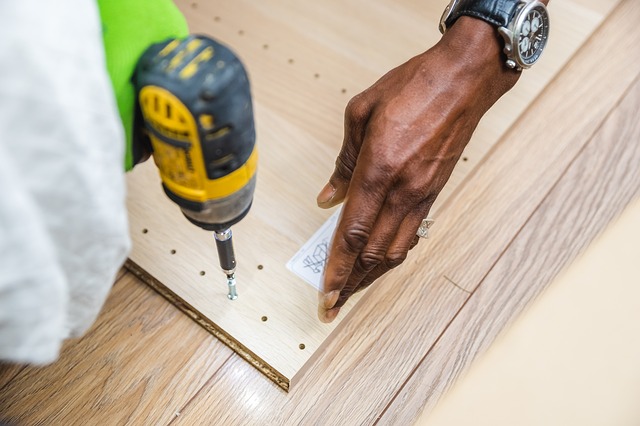Flat pack
Contents |
[edit] Introduction
DfMA Overlay to the RIBA Plan of Work, Mainstreaming Design for Manufacture and Assembly in Construction, 2nd Edition, published by the RIBA in 2021, defines flat pack as: ‘A term to describe prefabricated assemblies that are transported to site as flat, 2D elements as opposed to volumetric 3D units. They trade speed of on-site assembly for transport efficiency.’
Flat pack is a term typically associated with furniture. Flat pack furniture is also known as ready-to-assemble (RTA) furniture, knock down (KD) furniture or kit furniture.
This method of production can be used for items such as shelves, bookcases, tables, cupboards and so on. These items of furniture are mass produced as individual components. They are packaged so they can be purchased, transported and assembled by the customer at their final destination. Basic hardware and instructions are generally included.
[edit] History
Early flat pack furniture goes back to the mid-1800s with the introduction of the bentwood bistro chair. This chair was invented by Michael Thonet, a cabinet maker born in Germany.
The flat pack concept was advanced during the First World War by an American company known as Home Art Masters, but it was not successful. Experiments with flat pack furniture continued in the 1940s and 1950s, but it didn’t gain wide acceptance until the Scandinavian company, IKEA introduced a range of flat pack furniture in 1956.
[edit] Beyond furniture
On a larger scale, the flat pack method of production can also be applied to other forms of manufacturing, such as modular buildings. These are structures made from components manufactured on assembly lines in factories then assembled on site.
IKEA has made inroads into the development of modular construction, such as hotels and housing. This has sometimes been labelled by the press as 'flat pack homes'.
[edit] Related articles on Designing Buildings
Featured articles and news
The UK’s largest air pollution campaign.
Future Homes Standard, now includes solar, but what else?
Will the new standard, due to in the Autumn, go far enough in terms of performance ?
BSRIA Briefing: Cleaner Air, Better tomorrow
A look back at issues relating to inside and outside air quality, discussed during the BSRIA briefing in 2023.
Restoring Abbotsford's hothouse
Bringing the writer Walter Scott's garden to life.
Reflections on the spending review with CIAT.
Retired firefighter cycles world to raise Grenfell funds
Leaving on 14 June 2025 Stephen will raise money for youth and schools through the Grenfell Foundation.
Key points for construction at a glance with industry reactions.
Functionality, visibility and sustainability
The simpler approach to specification.
Architects, architecture, buildings, and inspiration in film
The close ties between makers and the movies, with our long list of suggested viewing.
SELECT three-point plan for action issued to MSPs
Call for Scottish regulation, green skills and recognition of electrotechnical industry as part of a manifesto for Scottish Parliamentary elections.
UCEM becomes the University of the Built Environment
Major milestone in its 106-year history, follows recent merger with London School of Architecture (LSE).
Professional practical experience for Architects in training
The long process to transform the nature of education and professional practical experience in the Architecture profession following recent reports.
A people-first approach to retrofit
Moving away from the destructive paradigm of fabric-first.
International Electrician Day, 10 June 2025
Celebrating the role of electrical engineers from André-Marie Amperè, today and for the future.
New guide for clients launched at Houses of Parliament
'There has never been a more important time for clients to step up and ...ask the right questions'
The impact of recycled slate tiles
Innovation across the decades.
EPC changes for existing buildings
Changes and their context as the new RdSAP methodology comes into use from 15 June.
























